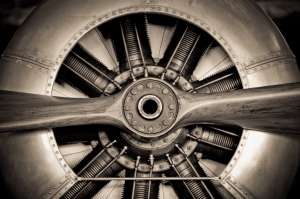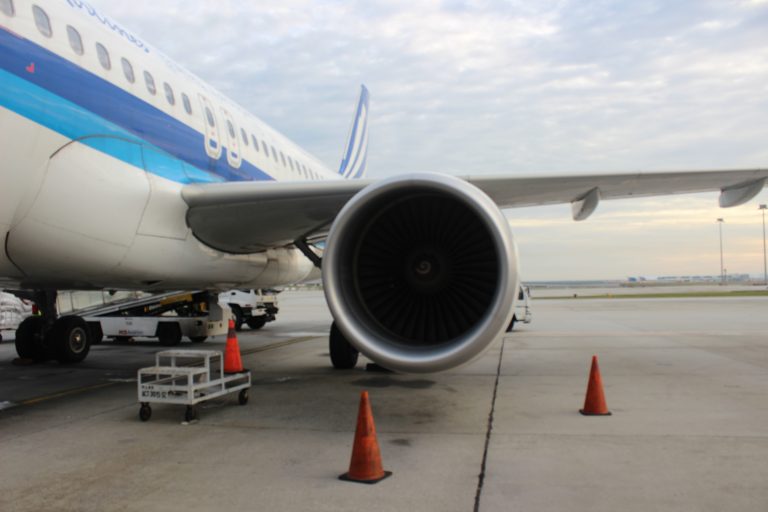The Essential Guide to MRO ERP Systems: Everything You Need to Know

Introduction
MRO ERP systems are pivotal tools for enhancing the efficiency and effectiveness of managing maintenance, repair, and operations activities in various industries. These systems integrate essential business functions, such as inventory management, procurement, and asset maintenance, to streamline and optimize the MRO processes. These systems empower organizations to make informed decisions, schedule maintenance tasks proactively, and ensure the availability of critical equipment and spare parts.
MRO ERP (Maintenance, Repair, and Operations Enterprise Resource Planning) systems are critical tools for optimizing the management of assets, resources, and maintenance activities within various industries
Table of Contents
The Basics of MRO ERP Systems
A. Understanding ERP Systems:
MRO ERP systems are a specialized subset of Enterprise Resource Planning software tailored for maintenance and repair functions. They integrate data, streamline processes, and enhance decision-making, providing a comprehensive view of assets, inventory, and workforce.
B. Scope and Applications of MRO ERP:
These systems are applied in industries such as manufacturing, utilities, aviation, and more to efficiently manage equipment maintenance, spare parts inventory, and workforce scheduling, ultimately minimizing downtime and operational costs.
C. Evolution of MRO ERP Systems:
The evolution of MRO ERP has seen the incorporation of advanced technologies like IoT, predictive maintenance, and data analytics to further enhance asset management and productivity in modern industrial settings.
Benefits of Implementing MRO ERP

Implementing MRO (Maintenance, Repair, and Operations) ERP (Enterprise Resource Planning) software offers a wide range of benefits for organizations in various industries. Here, we will discuss four significant advantages of adopting MRO ERP:
A. Enhanced Cost Control:
One of the primary benefits of MRO ERP is enhanced cost control. This software allows organizations to track and manage maintenance and repair expenses more effectively. By integrating financial data with maintenance activities, it becomes easier to monitor and allocate budgets. With real-time cost analysis, companies can make data-driven decisions to optimize spending, reduce operational costs, and allocate resources more efficiently.
B. Streamlined Inventory Management:
Efficient inventory management is crucial for businesses with a significant MRO component. MRO ERP systems help streamline this process by providing real-time visibility into inventory levels and usage. This ensures that the right spare parts and materials are readily available when needed, reducing downtime and minimizing carrying costs. Additionally, inventory optimization helps avoid overstocking or understocking, leading to substantial cost savings.
C. Improved Asset Maintenance:
MRO ERP systems enable organizations to schedule, track, and manage maintenance activities more effectively. With preventive maintenance and asset tracking features, companies can prolong the lifespan of equipment, reduce unexpected breakdowns, and enhance overall operational efficiency. This results in increased equipment uptime and improved productivity, which, in turn, positively impacts the bottom line.
D. Compliance and Reporting:
Maintaining regulatory compliance is crucial in many industries, particularly those involving critical infrastructure and safety standards. MRO ERP software provides tools to ensure that maintenance and repair activities adhere to these standards. Moreover, it simplifies reporting, making it easier to generate compliance reports for audits and inspections. This not only mitigates risks but also enhances an organization’s reputation and credibility.
Key Features of MRO ERP Systems
MRO (Maintenance, Repair, and Operations) ERP systems play a pivotal role in enhancing the efficiency and productivity of organizations, particularly those involved in manufacturing, facility management, and maintenance operations. These systems offer a comprehensive set of features that cater to the specific needs of maintenance and repair processes. Here are the key features of MRO ERP systems:
A. Asset Management:
Asset management is a fundamental component of MRO ERP systems. It enables organizations to track, maintain, and optimize their physical assets, such as machinery, equipment, and facilities. This feature helps in extending the lifespan of assets and reducing downtime by scheduling preventive maintenance.
B. Inventory Control:
Effective inventory management is crucial for MRO operations. MRO ERP systems offer tools for tracking and managing spare parts, consumables, and materials required for maintenance. This helps in ensuring that the right parts are available when needed, minimizing downtime and reducing carrying costs.
C. Work Order Management:
Work order management allows organizations to create, assign, and track maintenance tasks. This feature ensures that maintenance activities are well-organized, completed in a timely manner, and properly documented, improving overall operational efficiency.
D. Vendor Management:
MRO ERP systems often include vendor management features, which streamline the procurement process. Organizations can track vendor performance, negotiate contracts, and manage supplier relationships to ensure a steady supply of quality parts and materials.
E. Integration Capabilities:
Integration capabilities are essential for MRO ERP systems to connect with other enterprise systems, such as financial and HR software. This ensures that data flows seamlessly across the organization, enabling better decision-making and comprehensive reporting.
Maximizing ROI with MRO ERP
Maximizing Return on Investment (ROI) within Maintenance, Repair, and Operations (MRO) Enterprise Resource Planning (ERP) systems involves a multi-faceted approach that includes KPI tracking, continuous improvement, and scaling and expansion.
A. KPI Tracking: Key Performance Indicators (KPIs) are essential for monitoring the effectiveness of MRO ERP implementation. These metrics help in measuring the efficiency of maintenance processes, inventory management, and cost control. By tracking KPIs such as equipment uptime, maintenance costs, and inventory turnover, organizations can identify areas for improvement and make data-driven decisions to enhance ROI. Real-time KPI tracking provides actionable insights that enable timely interventions and process optimization.
B. Continuous Improvement: The journey to higher ROI is an ongoing process. Continuous improvement involves refining MRO ERP workflows, optimizing inventory levels, and enhancing maintenance strategies. Regularly reviewing and analyzing data, user feedback, and industry best practices ensures that the system remains aligned with organizational goals and adapts to changing business environments. This iterative approach results in increased ROI by reducing operational costs and improving asset reliability.
C. Scaling and Expansion: As a company grows, its MRO needs evolve. A robust MRO ERP system should be capable of scaling and expanding to accommodate new facilities, equipment, and maintenance demands. Adapting the system to these changes ensures that the initial investment continues to yield returns, while also supporting business expansion and diversification.
Conclusion
This discussion has provided valuable insights into MRO (Maintenance, Repair, and Operations) ERP systems. We’ve summarized key takeaways, emphasizing the significance of efficient MRO management for businesses. Looking ahead, the future of MRO ERP systems promises advancements in automation, predictive maintenance, and integration with emerging technologies like IoT and AI. These innovations will empower organizations to optimize their maintenance processes, reduce downtime, and enhance overall operational efficiency, ultimately contributing to long-term success in the ever-evolving landscape of maintenance and operations.
FAQs:
A. What is MRO ERP?
MRO ERP stands for Maintenance, Repair, and Operations Enterprise Resource Planning. It is a software solution designed to streamline and optimize the management of maintenance, repair, and operations activities within an organization. MRO ERP systems help businesses efficiently track and manage their assets, spare parts, maintenance schedules, and related processes.
B. How do I choose the right MRO ERP system?
Selecting the right MRO ERP system requires careful consideration. Factors to assess include the specific needs of your organization, scalability, user-friendliness, integration capabilities, vendor reputation, and cost. You should also evaluate the system’s ability to handle preventive and corrective maintenance, manage inventory, and offer analytics and reporting features.
C. What are the common challenges in MRO ERP implementation?
MRO ERP implementation can pose challenges such as data migration, employee training, change management, and ensuring a smooth transition without disrupting daily operations. Additionally, integrating the new system with existing software and hardware can be a complex task. Overcoming these challenges requires careful planning and stakeholder involvement.
D. What industries benefit the most from MRO ERP?
MRO ERP systems are valuable across various industries, including manufacturing, aviation, energy, utilities, healthcare, and transportation. These systems help organizations with complex maintenance and asset management needs, where downtime and equipment reliability are critical to business operations.
E. Is cloud-based MRO ERP the future?
Cloud-based MRO ERP solutions are gaining popularity due to their flexibility, scalability, and cost-efficiency. They offer real-time accessibility, reduced IT infrastructure costs, and easier updates. While traditional on-premises solutions still have their place, many organizations see cloud-based MRO ERP as the future for its adaptability to changing business needs.








